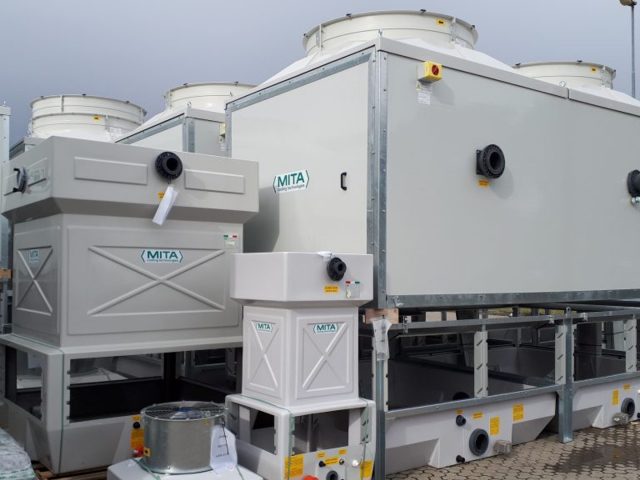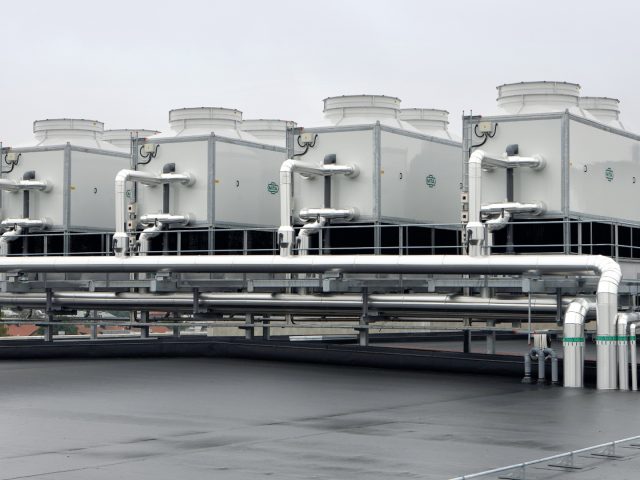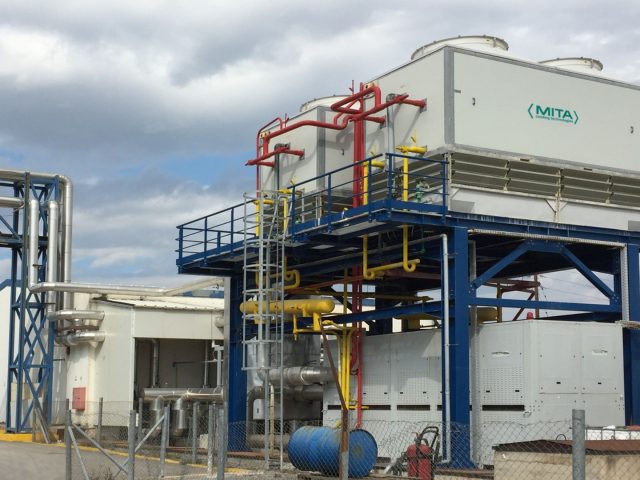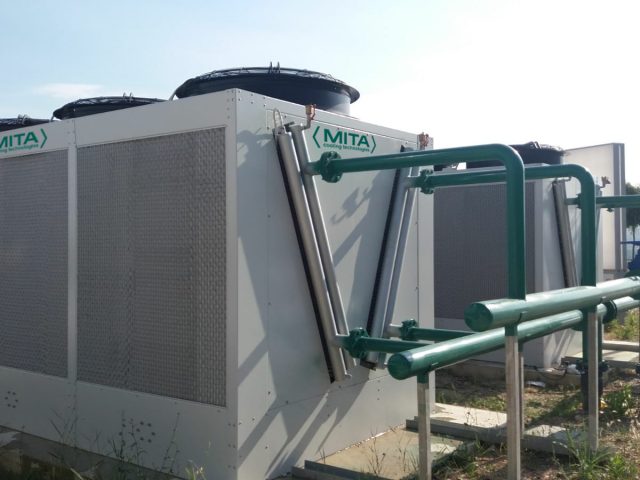Theory of Cooling Technologies
How open and closed circuit cooling towers, evaporative condensers and adiabatic systems work: a quick guide to the knowledge of cooling technologies.

Open circuit evaporative cooling: how it works
Evaporative cooling towers exploit a simple and natural physical principle: forced evaporation of a minimal water quantity lowers the temperature of the main water mass. Therefore, cooling towers represent the most widely employed cooling system in civil and industrial applications still today.
Wet bulb temperature in the installation area is the minimum outlet temperature which can be obtained theoretically from a cooling tower: this value is always lower than dry bulb temperature (naturally unless air is already saturated).
Practically, an adequately sized cooling tower manages to cool circulating water down to a temperature 2-3 °C above the wet bulb temperature. This is due to the effects of performance factors related to air saturation.
On this basis many designers and equipment manufacturers plan to use cooling tower water while sizing cooling circuits and heat exchangers. This way they ensure optimum plant efficiency from the first design stage.
Industrial Process Cooling: What to KnowClosed circuit evaporative cooling: how it works
Closed circuit cooling towers exploit the same physical principle as their open circuit counterpart in order to dissipate the heat: the forced evaporation of a minimal quantity of water lowers temperature of the main water mass.
Process fluid to be cooled enters the upper header of a coil. This last is constantly wetted by water recirculating in the small, pre-assembled evaporative circuit of the unit.
Evaporation of a fraction of recirculating water removes heat from coil exchanging surface. Cooling performance of a closed circuit cooling tower depends on the ambient wet bulb temperature.
Industrial Process Cooling: What to Know

Evaporative condensers: how they work
Evaporative condensers are particular refrigerant condensers that exploit the same physical principle as cooling towers in order to dissipate heat.
The refrigerant (hydrohalocarbon or ammonia) to be condensed enters the upper header of a coil. As for closed loop cooling towers, coil is constantly wetted by water recirculating in the small, pre-assembled evaporative circuit of the unit.
Evaporation of a fraction of recirculating water removes heat from coil exchanging surface. Here again, performances depend on ambient wet bulb temperature as for water cooling towers.
Industrial Process Cooling: What to KnowAdiabatic cooling: how it works
MITA adiabatic coolers exploit the adiabatic cooling principle to improve finned coil’s efficiency. They can be used for water/glycol mixtures cooling or refrigerant condensation.
Adiabatic cooling is a thermodynamic phenomenon by which air temperature is decreased through humidification.
Temperature that can be reached is called “adiabatic saturation temperature”: it can be much lower than “dry” air temperature
depending on humidification system efficiency.
MITA Cooling Technologies developed an air cooling system that allows to fully exploit fan characteristics in terms of flow rate. High humidification efficiency is ensured.
Industrial Process Cooling: What to Know
Resources
Best practices
Read all Pieces of Advice by MITA Cooling TechnologiesWhat to Know
Find Out All Technical TermsTechnical Articles
Read All our Technical ArticlesNewsletter
Subscribe to MITA newsletter and stay updated on technical solutions for industrial and civil cooling and get to know our offer.